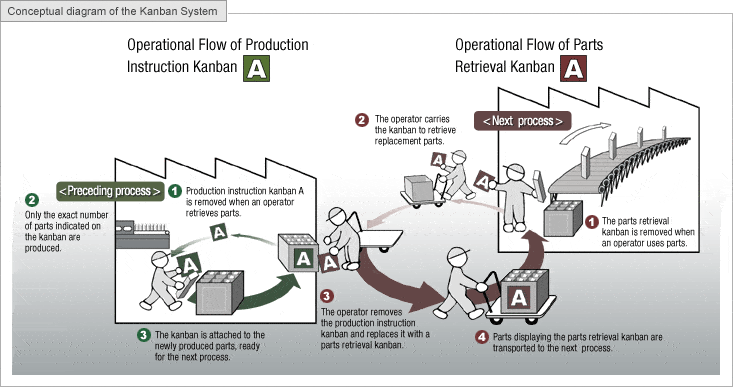Discover the Benefits of the Kanban Methodology for Your Business
Kanban is a Japanese term that means “visual signal” or “card.” It is a lean manufacturing system that originated in Japan, and its primary objective is to optimize production and increase efficiency. Kanban is a methodology that uses visual signals to communicate the status of work and to help teams manage their workflow.
Origins of Kanban
Kanban was first introduced in the Toyota Production System (TPS) in the 1940s. TPS was developed by Taiichi Ohno, an engineer at Toyota, who was inspired by the grocery store model of only restocking items as they were sold. Ohno believed that if production was driven by customer demand, it would lead to less waste and more efficiency.

The Kanban system was created as a way to manage inventory and production by using visual cues to signal when items needed to be restocked or when production needed to be increased or decreased. The system was so successful that it became a core component of TPS, and it spread to other industries, such as software development and healthcare.
How Kanban Works
The Kanban system is based on the idea of visualizing workflow. It involves the use of physical or digital boards that display work items and their current status. Each work item is represented by a card, which contains information such as the item’s name, description, and the person or team responsible for it.
The Kanban board is divided into columns that represent the various stages of the workflow, such as “to do,” “in progress,” and “done.” As work items move through the workflow, they are moved from one column to the next. The movement of work items is driven by the principle of “pull” rather than “push.” This means that work is only started when there is demand for it, rather than being pushed through the system based on a pre-determined schedule.
Kanban also emphasizes limiting work in progress (WIP), which means that teams should only work on a certain number of tasks at a time. This helps to prevent bottlenecks and ensures that work is completed more efficiently. By limiting WIP, teams can focus on completing work items before starting new ones, which reduces context switching and improves overall productivity.
Benefits of Kanban
Kanban provides several benefits to organizations that implement it:
- Improved visibility: Kanban boards provide a visual representation of the workflow, which makes it easy for team members and stakeholders to understand the status of work items and identify bottlenecks.
- Increased efficiency: Kanban’s focus on pull-based workflow and limiting WIP helps teams to complete work items more quickly and reduces the time it takes for work to move through the system.
- Reduced waste: By only producing what is needed and limiting WIP, Kanban helps to reduce waste and minimize the amount of work that is started but not completed.
- Better collaboration: Kanban encourages collaboration among team members by making it easy to see who is responsible for each work item and where it is in the workflow.
- Continuous improvement: Kanban’s focus on visualization and limiting WIP makes it easy to identify areas for improvement and make changes to the workflow as needed.
Conclusion
Kanban is a lean manufacturing system that originated in Japan and is now used in various industries worldwide. Its focus on visualizing workflow, pull-based production, and limiting WIP helps teams to work more efficiently, reduce waste, and collaborate effectively. By providing a clear picture of the status of work items, Kanban boards allow teams to manage their workflow more effectively and identify areas for improvement. The pull-based system ensures that work is only started when there is demand for it, which reduces the amount of work that is started but not completed.
Moreover, Kanban’s emphasis on limiting WIP enables teams to focus on completing work items before starting new ones, which reduces context switching and improves overall productivity. This, in turn, can lead to faster completion of projects, reduced cycle times, and improved customer satisfaction.
Kanban is a highly adaptable system that can be tailored to meet the needs of different teams and organizations. It can be used to manage projects of any size or complexity and can be applied to a wide range of industries, from manufacturing to software development to healthcare.
In conclusion, Kanban is a highly effective system for managing workflow and improving productivity. Its focus on visualizing workflow, pull-based production, and limiting WIP provides teams with a clear picture of the status of work items and enables them to work more efficiently and collaboratively. By implementing Kanban, organizations can reduce waste, improve efficiency, and continuously improve their processes.
Contact Squirrel uses a Kanban layout for a contact management system. It’s the best way to visualize where you are with each contact in your workflow. You can clearly see your “New Leads” or “Prospective Clients” and follow them throughout the process to “Close Sales” or “Lifetime Customers”! Try Contact Squirrel for free by creating an account today!

